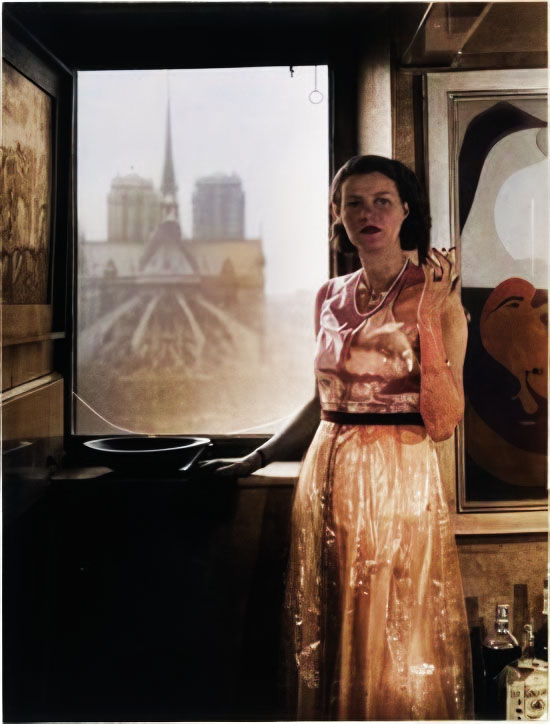
Peggy Guggenheim: The Art World’s Daring Heiress
In the vivid tapestry of 20th-century art, few figures loom as large and flamboyantly as Peggy Guggenheim. Known as the bohemian heiress who transformed the art world with her bold patronage, daring taste, and unforgettable lifestyle, Peggy Guggenheim was more than just a collector, she was a cultural force. From scandalous love affairs with artists and writers to pioneering support for abstract and surrealist art, her life was as riveting as the masterpieces she championed.
But who was Peggy Guggenheim really? What made her name synonymous with modern art, Venice palazzos, and avant-garde legends? This is the remarkable story of the woman who helped shape the face of contemporary art, and left a legacy that still dazzles today.
Marguerite “Peggy” Guggenheim was born on August 26, 1898, into the fabulously wealthy Guggenheim family. Her father, Benjamin Guggenheim, was one of seven sons of Meyer Guggenheim, a mining magnate whose fortune was built on silver, copper, and smelting. Though not as fabulously rich as other Guggenheims, her branch of the family had a slightly smaller share, Peggy still inherited a substantial trust fund.
Tragedy struck early. In 1912, when Peggy was just 14, her father perished aboard the Titanic, refusing a lifeboat in favor of helping women and children escape. This traumatic loss haunted her for life and profoundly shaped her emotional landscape. Raised by a distant mother, Peggy felt like a misfit in high society. As she came of age, she began to search for something greater than wealth, something that would give her identity and purpose.
An Unlikely Patron of the Avant-Garde
Peggy was a misfit in American high society, too eccentric, too curious, too independent. By her early twenties, she had moved to Paris, where she immersed herself in the bohemian life of the Left Bank. It was here that she began meeting artists, writers, and intellectuals who would become central to her story.
Her entrée into the art world began in earnest in the 1930s. With little formal training but immense passion, she opened a gallery in London in 1938 called Guggenheim Jeune. It was there she exhibited artists such as Jean Cocteau, Wassily Kandinsky, and Yves Tanguy. Guided by the legendary art historian Herbert Read, she began to build what would become one of the world’s most significant collections of modern art.
Peggy’s approach was both impulsive and visionary. She didn’t buy art to impress society; she bought what she loved, and what challenged the status quo. Her motto? “Buy a picture a day.”
World War II and the Art of Resistance
As World War II broke out in Europe, Peggy found herself in a race against time. Determined to save modern art from the Nazis, she went on a feverish buying spree. In 1940 and 1941, as Hitler’s forces advanced across Europe, Peggy crisscrossed France buying up masterpieces at a discount, often from desperate artists fleeing persecution.
She later claimed she bought “a picture a day” during this period. The result? A collection that included Picasso, Miró, Braque, Dalí, Ernst, Magritte, and Duchamp, the heavyweights of modern art.
In 1941, she fled to the United States, bringing her collection, and some of the artists, with her. One of those was Max Ernst, the German surrealist who would become her second husband.
A Gallery That Changed American Art
In 1942, Peggy opened The Art of This Century Gallery in New York, a radical space that doubled as a gallery and a museum. Designed by Frederick Kiesler, it featured curved walls, floating paintings, and abstract installations, nothing like the traditional white-walled galleries of the time.
This space became a hub for the avant-garde. Peggy exhibited not only her European artists but also a new wave of American talent. She championed a young Jackson Pollock, whose drip paintings would revolutionize art. She gave him his first solo show and helped support him financially.
Many art historians argue that without Peggy Guggenheim, Abstract Expressionism might not have taken root as powerfully as it did in America.
The Lovers, the Lunacy, the Libertine Life
Peggy’s personal life was as unconventional as her art collection. She famously said, “It is always assumed that when a woman is interested in art, she is either a snob or a nymphomaniac. I was neither. I was a patron.”
But Peggy was also unapologetically sexual in an era that frowned on female desire. She had affairs with many prominent figures: Samuel Beckett, Yves Tanguy, Marcel Duchamp, and Max Ernst (whom she married, briefly). Others rumored to be lovers included Constantin Brâncuși, Roland Penrose, and even a young Jackson Pollock.
She kept detailed journals of her liaisons and once bragged about sleeping with over 1,000 men. Though often exploited emotionally by lovers and husbands, she never let it define her. Her defiance of social conventions made her both scandalous and iconic.
Venice: A City, a Palace, a Legacy
In 1947, Peggy made a decision that would cement her place in art history, she moved to Venice, the decaying, dreamy city of canals, mystery, and art. She bought the Palazzo Venier dei Leoni, an unfinished 18th-century building on the Grand Canal.
Venice was her dream, her sanctuary. The Palazzo became her home and her museum. She filled its rooms with her collection, invited artists and intellectuals to stay, and even kept her beloved dogs buried in the garden.
In 1948, she exhibited her collection at the Venice Biennale, marking the first time modern American artists like Pollock and Rothko were seen in Europe. She had brought the future of art to the Old World.
What Is the Peggy Guggenheim Collection Worth Today?
Today, the Peggy Guggenheim Collection is one of the most visited art museums in Italy and among the most significant collections of modern art in the world. It includes seminal works by:
Jackson Pollock
Pablo Picasso
Salvador Dalí
Max Ernst
Joan Miró
René Magritte
Giorgio de Chirico
As of 2025, the estimated value of the collection is over $1 billion, though many experts argue it is “priceless.” The collection is now owned by the Solomon R. Guggenheim Foundation, which also runs the Guggenheim Museums in New York, Bilbao, and Abu Dhabi.
Why Peggy Guggenheim Is Famous
Peggy is famous not only for her collection but for changing the landscape of modern art. She did what few women, and even fewer people, dared to do in her time:
She rescued masterpieces from Nazi-occupied Europe.
She launched careers of artists who defined modernism.
She defied gender roles, becoming a powerful figure in a male-dominated art world.
She lived boldly, hosting salons, championing the avant-garde, and curating life like a living artwork.
Her autobiography, Out of This Century: Confessions of an Art Addict, became a cult classic. She is remembered not only as a tastemaker but as a cultural revolutionary.
What Happened to Peggy Guggenheim?
Peggy lived out her final years in Venice, largely reclusive but surrounded by her art, her Lhasa Apsos, and her memories. She died on December 23, 1979, at the age of 81. Per her wishes, her ashes were placed in the garden of her beloved Palazzo, alongside her dogs.
She left her collection to the Solomon R. Guggenheim Foundation, ensuring it would remain intact and open to the public.
Fun and Lesser-Known Facts About Peggy Guggenheim
She was the black sheep of the Guggenheim family. While her relatives funded mining empires and American museums, Peggy was considered eccentric, even an embarrassment, for her bohemian life.
Her style was iconic. With her statement sunglasses, vibrant kaftans, and unapologetic flamboyance, Peggy became a fashion icon as well as an art icon.
She once worked in a bookstore. In the 1920s, she worked at the famed Sunwise Turn bookshop in New York, where she mingled with literary elites.
She funded the publication of James Joyce’s “Ulysses.” She was close friends with Sylvia Beach and helped fund the groundbreaking modernist novel.
She took LSD. In the 1950s, under clinical supervision, Peggy experimented with LSD. She later described the experience as life-altering.
She wanted to become a writer. Though she never fully succeeded in that ambition, her autobiography remains a sharp, witty, and revealing look at her extraordinary life.
She had a rocky relationship with her children. Her daughter Pegeen Vail, an artist herself, struggled with mental illness and died young, another deep sorrow in Peggy’s life.
She held ‘open house’ on Sundays. Visitors could tour her Venice home and see her collection for free, something she insisted upon as part of her belief that art should be public.
The Heiress Who Rewrote Art History
Peggy Guggenheim didn’t just collect art; she lived it. She moved through the cultural revolutions of the 20th century with fearless curiosity, turning her privilege into purpose. Her collection, built on instinct, passion, and radical taste, now stands as one of the world’s great monuments to modern art.
More than a patron, she was a provocateur, a visionary, and a rebel. In a world that often tried to dismiss her as frivolous or scandalous, Peggy Guggenheim proved that a woman with a sharp eye, deep pockets, and a stubborn streak could change the course of history.

